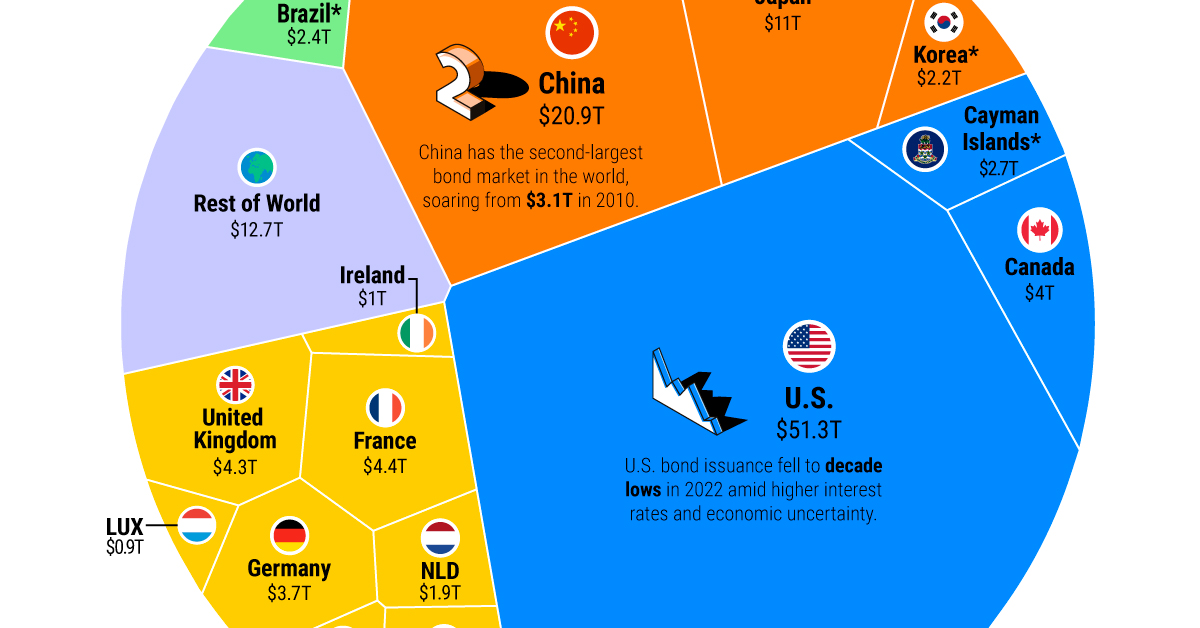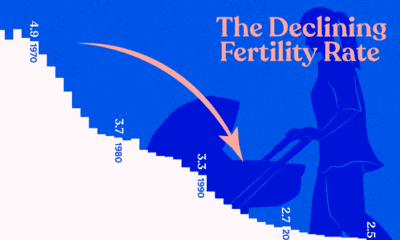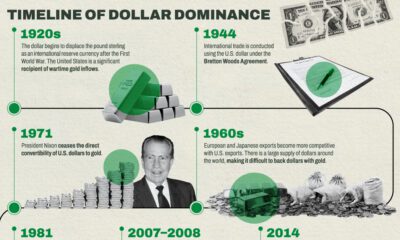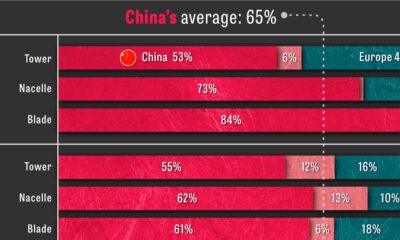Central Banks
Ranked: The Largest Bond Markets in the World
Subscribe to the Advisor Channel free mailing list for more like this
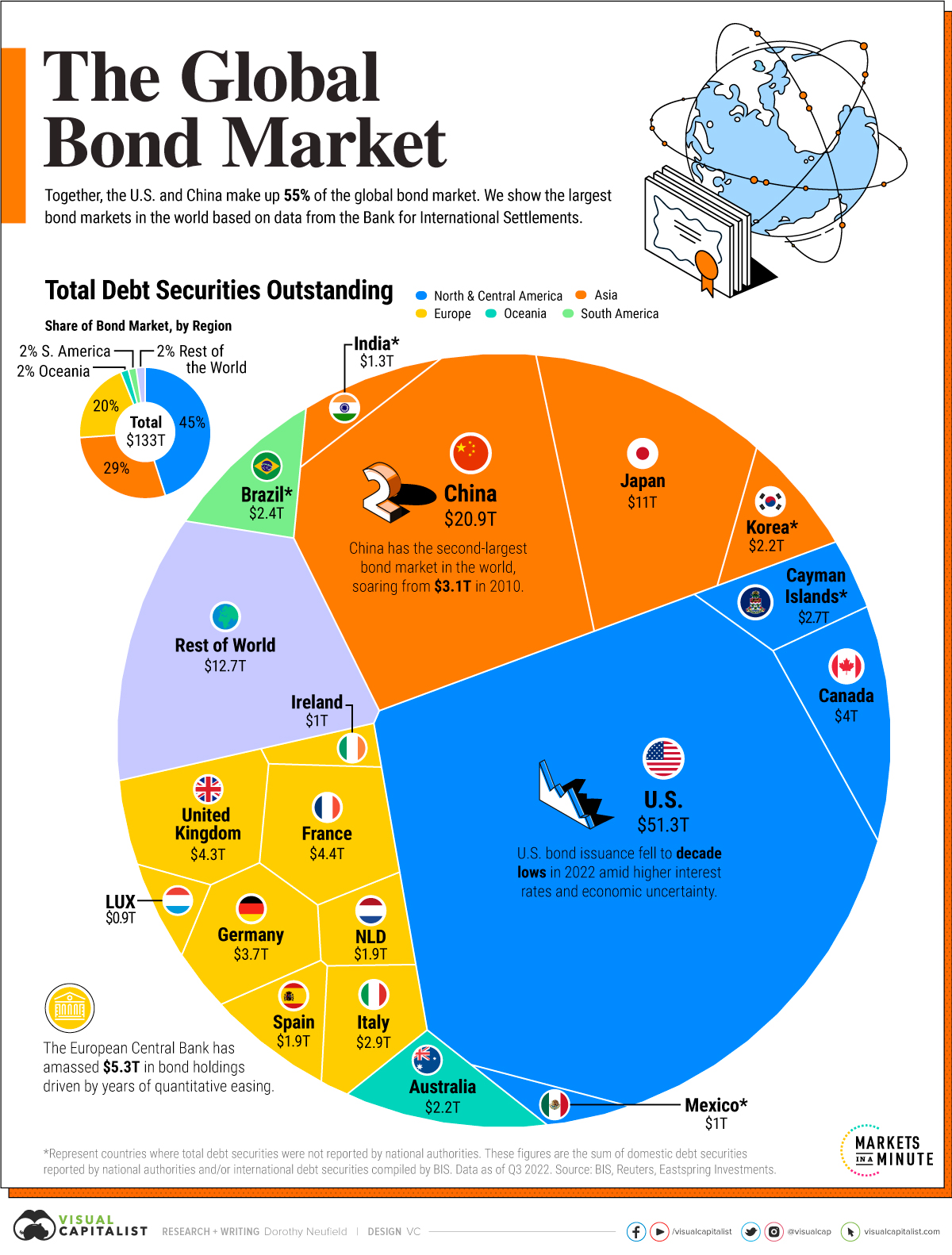
The Largest Bond Markets in the World
This was originally posted on Advisor Channel. Sign up to the free mailing list to get beautiful visualizations on financial markets that help advisors and their clients.
In 2022, the global bond market totaled $133 trillion.
As one of the world’s largest capital markets, debt securities have grown sevenfold over the last 40 years. Fueling this growth are government and corporate debt sales across major economies and emerging markets. Over the last three years, China’s bond market has grown 13% annually.
Based on estimates from the Bank for International Statements, this graphic shows the largest bond markets in the world.
Ranked: The World’s Top Bond Markets
Valued at over $51 trillion, the U.S. has the largest bond market globally.
Government bonds made up the majority of its debt market, with over $26 trillion in securities outstanding. In 2022, the Federal government paid $534 billion in interest on this debt.
China is second, at 16% of the global total. Local commercial banks hold the greatest share of its outstanding bonds, while foreign ownership remains fairly low. Foreign interest in China’s bonds slowed in 2022 amid geopolitical tensions in Ukraine and lower yields.
| Bond Market Rank | Country / Region | Total Debt Outstanding | Share of Total Bond Market |
|---|---|---|---|
| 1 | 🇺🇸 U.S. | $51.3T | 39% |
| 2 | 🇨🇳 China | $20.9T | 16% |
| 3 | 🇯🇵 Japan | $11.0T | 8% |
| 4 | 🇫🇷 France | $4.4T | 3% |
| 5 | 🇬🇧 United Kingdom | $4.3T | 3% |
| 6 | 🇨🇦 Canada | $4.0T | 3% |
| 7 | 🇩🇪 Germany | $3.7T | 3% |
| 8 | 🇮🇹 Italy | $2.9T | 2% |
| 9 | 🇰🇾 Cayman Islands* | $2.7T | 2% |
| 10 | 🇧🇷 Brazil* | $2.4T | 2% |
| 11 | 🇰🇷 South Korea* | $2.2T | 2% |
| 12 | 🇦🇺 Australia | $2.2T | 2% |
| 13 | 🇳🇱 Netherlands | $1.9T | 1% |
| 14 | 🇪🇸 Spain | $1.9T | 1% |
| 15 | 🇮🇳 India* | $1.3T | 1% |
| 16 | 🇮🇪 Ireland | $1.0T | 1% |
| 17 | 🇲🇽 Mexico* | $1.0T | 1% |
| 18 | 🇱🇺 Luxembourg | $0.9T | 1% |
| 19 | 🇧🇪 Belgium | $0.7T | >1% |
| 20 | 🇷🇺 Russia* | $0.7T | >1% |
*Represent countries where total debt securities were not reported by national authorities. These figures are the sum of domestic debt securities reported by national authorities and/or international debt securities compiled by BIS.
Data as of Q3 2022.
As the above table shows, Japan has the third biggest debt market. Japan’s central bank owns a massive share of its government bonds. Central bank ownership hit a record 50% as it tweaked its yield curve control policy that was introduced in 2016. The policy was designed to help boost inflation and prevent interest rates from falling. As inflation began to rise in 2022 and bond investors began selling, it had to increase its yield to spur demand and liquidity. The adjustment sent shockwaves through financial markets.
In Europe, France is home to the largest bond market at $4.4 trillion in total debt, surpassing the United Kingdom by roughly $150 billion.
Banks: A Major Buyer in Bond Markets
Like central banks around the world, commercial banks are key players in bond markets.
In fact, commercial banks are among the top three buyers of U.S. government debt. This is because commercial banks will reinvest client deposits into interest-bearing securities. These often include U.S. Treasuries, which are highly liquid and one of the safest assets globally.
As we can see in the chart below, the banking sector often surpasses an economy’s total GDP.
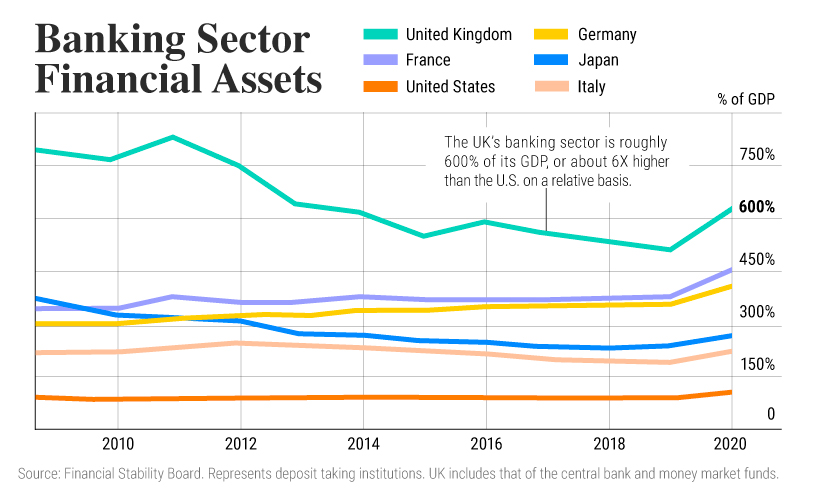
As interest rates have risen sharply since 2022, the price of bonds has been pushed down, given their inverse relationship. This has raised questions about what type of bonds banks hold.
In the U.S., commercial banks hold $4.2 trillion in Treasury bonds and other government securities. For large U.S. banks, these holdings account for almost 24% of assets on average. They make up an average 15% of assets for small banks in 2023. Since mid-2022, small banks have reduced their bond holdings due to interest rate increases.
As higher rates reverberate across the banking system and wider economy, it may expose further strains on global bond markets which have expanded rapidly in an era of dovish monetary policy and ultra-low interest rates.
Banks
Visualized: Real Interest Rates by Country
What countries have the highest real interest rates? We look at 40 economies to analyze nominal and real rates after projected inflation.
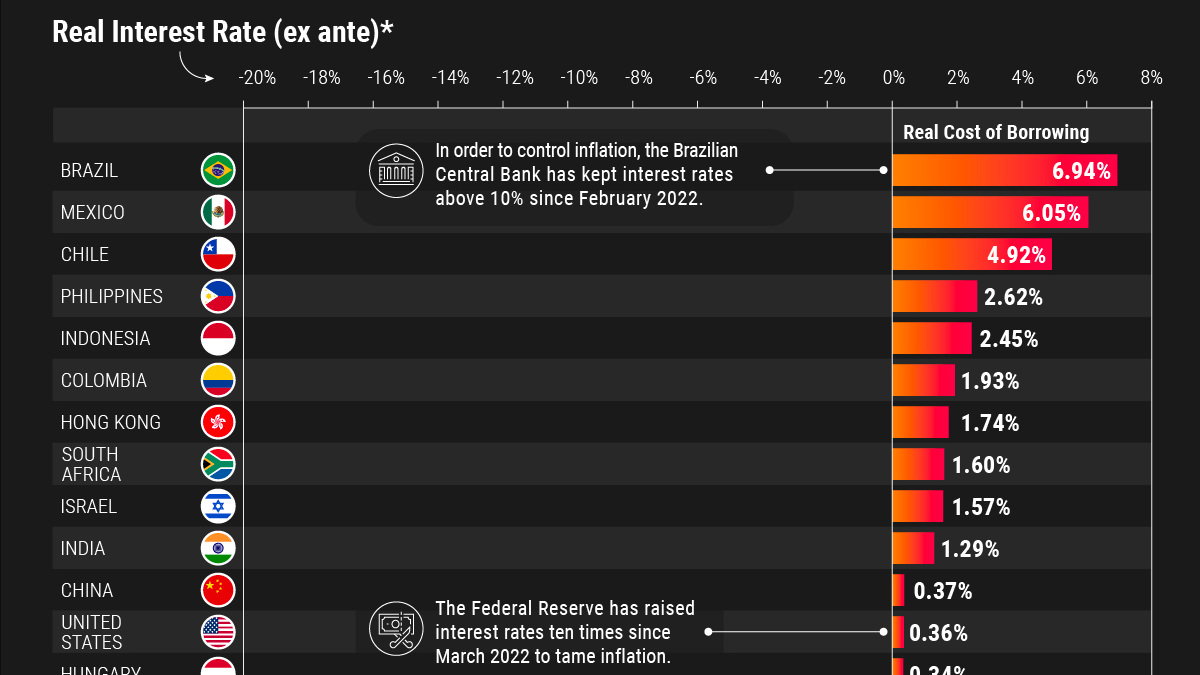
Visualized: Real Interest Rates of Major World Economies
This was originally posted on Elements. Sign up to the free mailing list to get beautiful visualizations on real assets and resource megatrends each week.
Interest rates play a crucial role in the economy because they affect consumers, businesses, and investors alike.
They can have significant implications for people’s ability to access credit, manage debts, and buy more expensive goods such as cars and houses.
This graphic uses data from Infinity Asset Management to visualize the real interest rates (ex ante) of 40 major world economies, by subtracting projected inflation over the next 12 months from current nominal rates.
Nominal Interest Rates vs. Real Interest Rates
Nominal interest rates refer to the rate at which money can be borrowed or lent at face value, without considering any other factors like inflation.
Meanwhile, the real interest rate is the nominal interest rate after taking into account inflation, reflecting the true cost of borrowing or lending. Real interest rates can fluctuate over time and are influenced by various factors such as inflation, central bank policies, and economic growth. They can also influence economic growth by affecting investment and consumption decisions.
According to the International Monetary Fund (IMF), since the mid-1980s, real interest rates across several advanced economies have declined steadily.
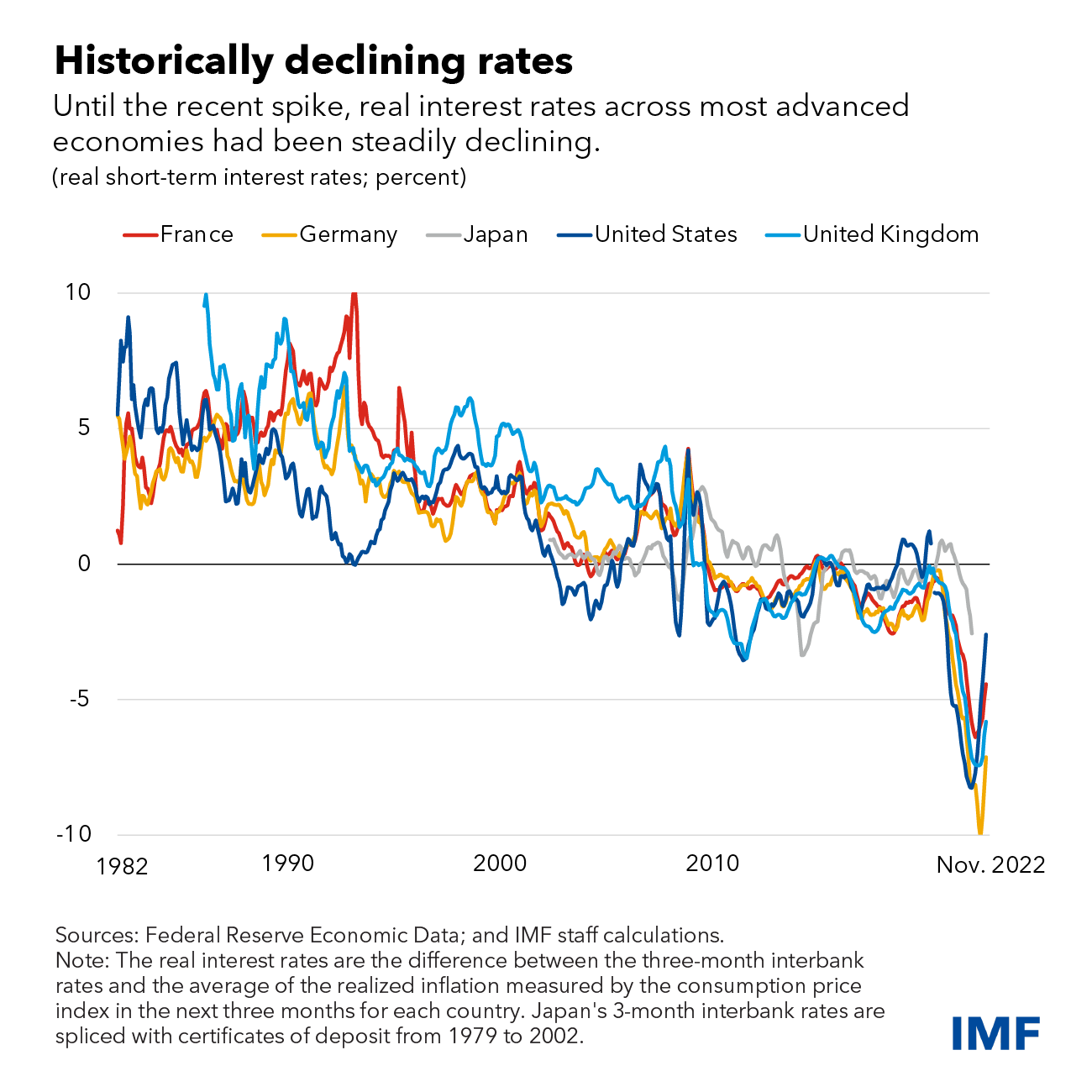
As of March 2023, Brazil has the highest real interest rate among the 40 major economies shown in this dataset.
Below we look at Brazil’s situation, along with the data of the four other major economies with the highest real rates in the dataset:
| Nominal Interest Rate | Real Interest Rate | |
|---|---|---|
| 🇧🇷 Brazil | 13.75% | 6.94% |
| 🇲🇽 Mexico | 11.00% | 6.05% |
| 🇨🇱 Chile | 11.25% | 4.92% |
| 🇵🇭 Philippines | 6.00% | 2.62% |
| 🇮🇩 Indonesia | 5.75% | 2.45% |
In general, countries with high interest rates offer investors higher yields on their investments but also come with higher risks due to volatile economies and political instability.
Below are the five countries in the dataset with the lowest real rates:
| Nominal Interest Rate | Real Interest Rate | |
|---|---|---|
| 🇦🇷 Argentina | 78.00% | -19.61% |
| 🇳🇱 Netherlands | 3.50% | -7.42% |
| 🇨🇿 Czech Republic | 7.00% | -7.17% |
| 🇵🇱 Poland | 6.75% | -6.68% |
| 🇧🇪 Belgium | 3.50% | -6.42% |
Hyperinflation, as seen in Argentina, can lead to anomalies in both real and nominal rates, causing problems for the country’s broader economy and financial system.
As you can see above, with a 78% nominal interest rate, Argentina’s real interest rates remain the lowest on the planet due to a staggering annual inflation rate of over 100%.
Interest Rate Outlook
Increasing inflation and tighter monetary policy have resulted in rapid increases in nominal interest rates recently in many countries.
However, IMF analysis suggests that recent increases could be temporary.
Central banks in advanced economies are likely to ease monetary policy and bring interest rates back to pre-pandemic levels when inflation is brought under control, according to the fund.
-
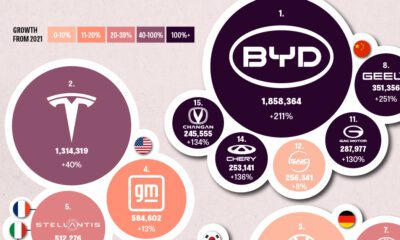
 Batteries2 weeks ago
Batteries2 weeks agoGlobal EV Production: BYD Surpasses Tesla
-

 Datastream2 weeks ago
Datastream2 weeks agoHow Gen Z Feels About Its Financial Future
-
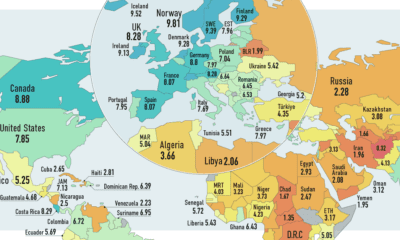
 Politics1 week ago
Politics1 week agoMapped: The State of Democracy Around the World
-
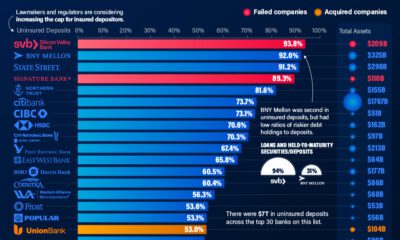
 Money4 weeks ago
Money4 weeks agoRanked: The U.S. Banks With the Most Uninsured Deposits
-

 AI1 week ago
AI1 week agoHow Smart is ChatGPT?
-
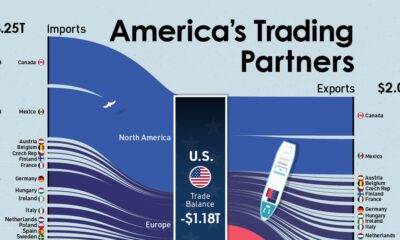
 Economy4 weeks ago
Economy4 weeks agoVisualized: The Largest Trading Partners of the U.S.
-

 Environment6 days ago
Environment6 days agoVisualizing the Biomass of All the World’s Mammals
-
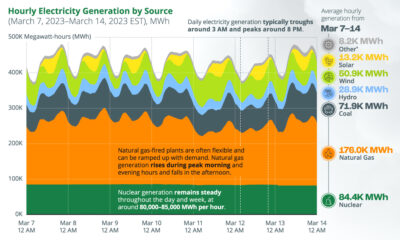
 Energy4 weeks ago
Energy4 weeks agoHow Does U.S. Electricity Generation Change Over One Week?

